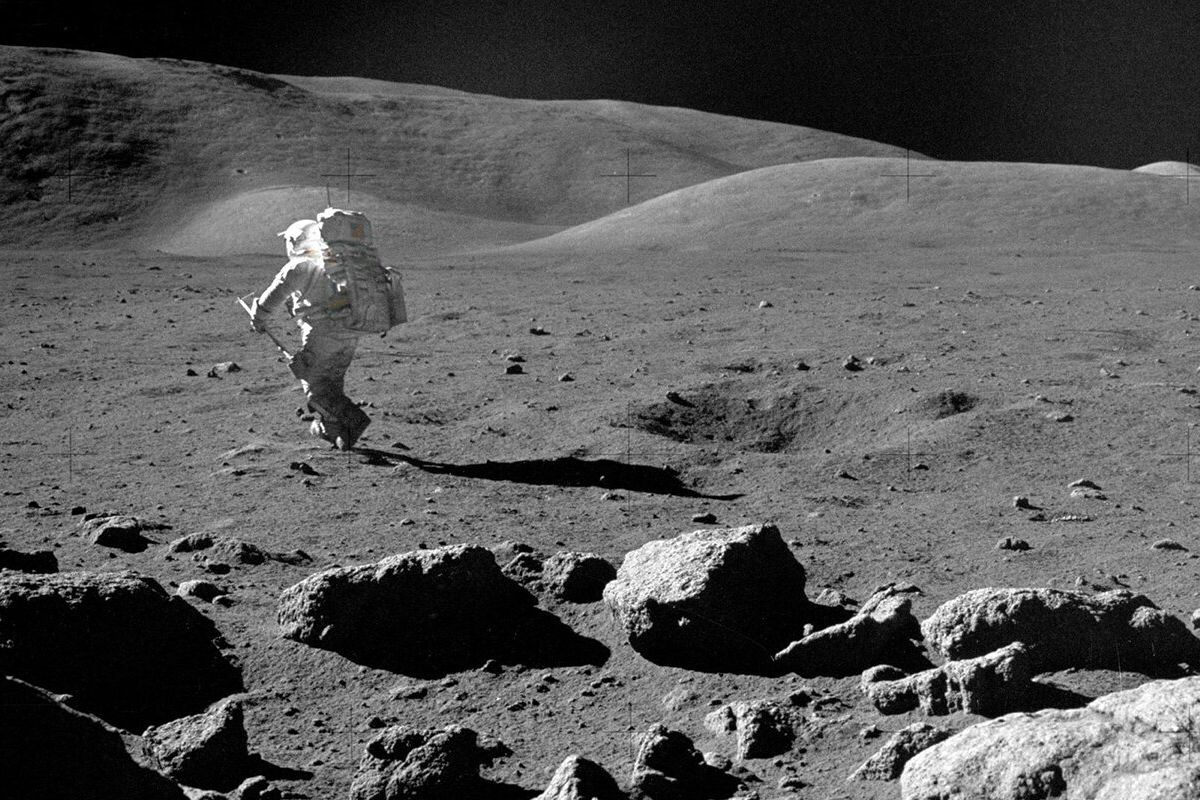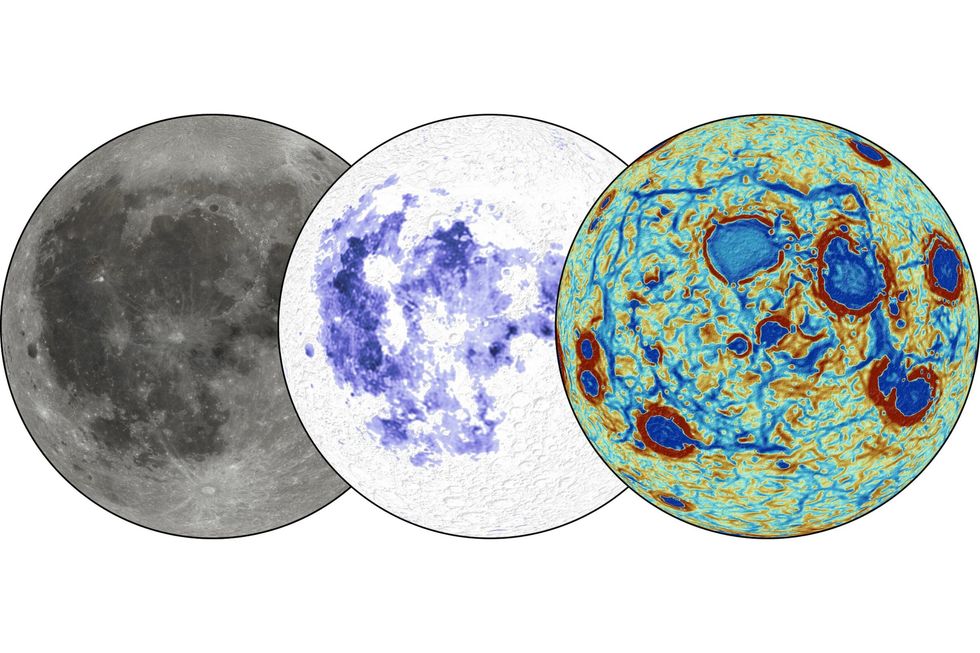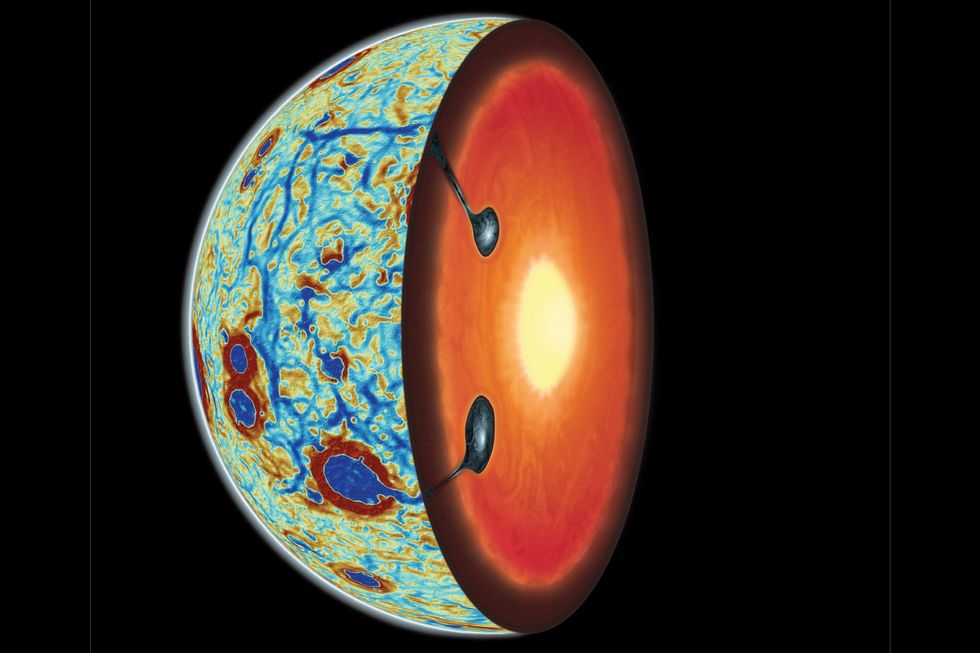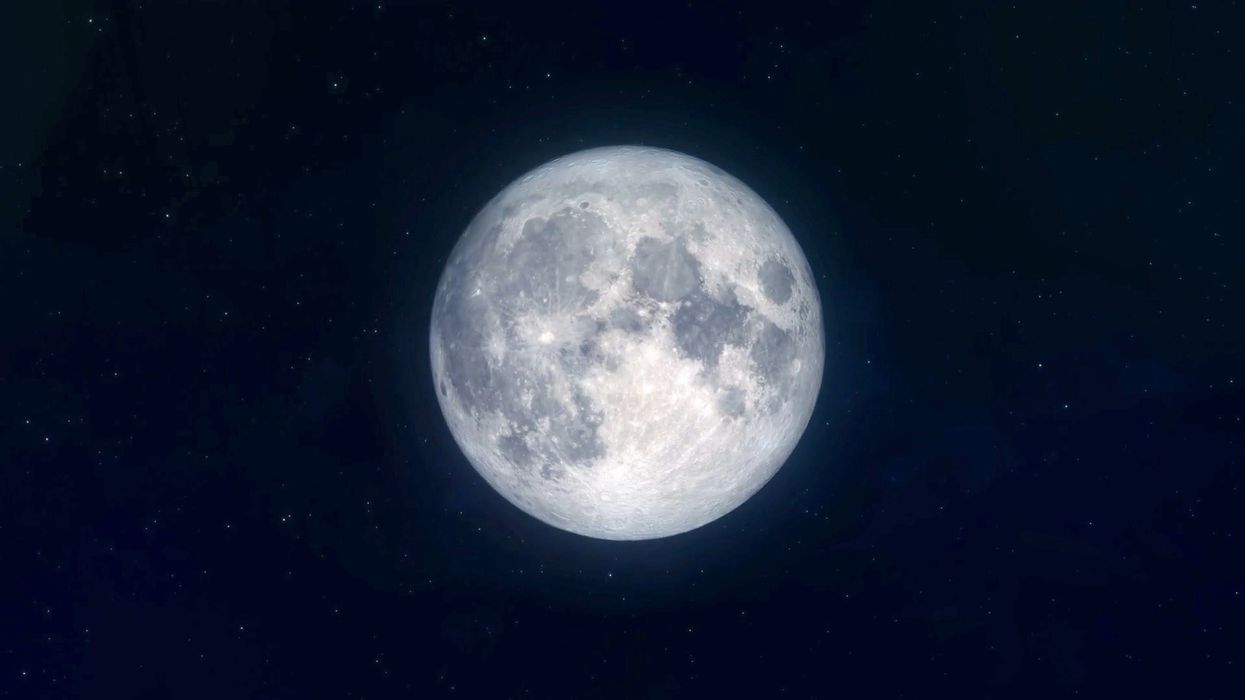Science & Tech
Harriet Brewis
Apr 09, 2024
NASA to Set a New Time Zone Specifically for the Moon
ZMG - Amaze Lab / VideoElephant
The Moon may be a symbol of peace and tranquillity, but what lies beneath the surface paints a very different picture.
The composition of our dear natural satellite is chemically confusing, but now new evidence suggests that this is because the Moon’s mantle did an incredible inward flip billions of years ago.
What was on the surface plunged downwards, and what was underneath emerged on top.
Most scientists agree that our celestial companion was formed some 4.5 billion years ago, when a small planet smashed into the infant Earth, sending molten rock hurtling into space.
One of these chunks went on to cool, solidify and form our Moon. But the question that has stumped scientists for decades is: how exactly did this all happen?
Analysis of rock samples, collected by Apollo astronauts more than 50 years ago, and theoretical models have left experts to draw a surprising conclusion.
"Our moon literally turned itself inside out," Jeff Andrews-Hanna, of the University of Arizona Lunar and Planetary Laboratory (LPL), said in a news release.
But, he went on: “There has been little physical evidence to shed light on the exact sequence of events during this critical phase of lunar history, and there is a lot of disagreement in the details of what went down – literally."

The samples of basaltic lava collected by the Apollo 11 crew showed surprisingly high concentrations of titanium.
Subsequent satellite observations then found that these titanium-rich volcanic rocks were primarily located on the moon's nearside, but how and why they ended up there has remained a mystery – until now.
Because the Moon formed fast and hot, it was likely covered by a magma ocean. Then, as the molten rock gradually cooled and solidified, it formed the Moon's mantle and the bright crust we see when we look up at our nighttime companion.
But deeper below the surface, the young moon was in a state of topsy-turvy.
Models suggest that the last dregs of the magma ocean crystallised into dense minerals including ilmenite, a mineral containing titanium and iron.
"Because these heavy minerals are denser than the mantle underneath, it creates a gravitational instability, and you would expect this layer to sink deeper into the Moon's interior," said Weigang Liang, of LPL, who led new research into the Moon’s geology.
Over the millennia that followed, this dense material did, indeed, sink into the interior. There it mixed with the mantle, melted and returned to the surface as titanium-rich lava flows that we see on the surface today.
The questions explored by Liang and his colleagues in their paper, published in the journal Nature Geoscience, were as follows:
Did this material sink as it formed a little at a time, or all at once after the Moon had fully solidified? Did it sink into the interior globally and then rise up on the near side, or did it migrate to the near side and then sink? Did it sink in one big blob, or several smaller blobs?

The lunar nearside, with its dark regions covered by titanium-rich volcanic flows, makes up the Moon's familiar sight from Earth.
This dark so-called “mare” region is surrounded by a polygonal pattern of linear gravity anomalies which scientists take to be the remnants of dense material that sank into the interior.
Their presence provides the first physical evidence for the nature of the Moon’s mantle overturn more than 4 billion years ago.
"Without evidence, you can pick your favourite model,” co-lead author Adrien Broquet, of the German Aerospace Center in Berlin, noted.
“Each model holds profound implications for the geologic evolution of our Moon.”
Models used in a previous study, led by Nan Zhang at Peking University (another co-author on the new paper), predicted that the layer of titanium-rich material beneath the crust first migrated to the near side of the Moon – possibly triggered by a giant impact on the far side – and then sunk into the interior in a network of sheetlike slabs, tumbling into the lunar interior like waterfalls.
But when this material sank, it left behind a small vestige of the dense titanium-rich material beneath the crust, which took the form of a geometric pattern of intersecting linear bodies.
"When we saw those model predictions, it was like a lightbulb went on," Andrews-Hanna recalled, "because we see the exact same pattern when we look at subtle variations in the Moon's gravity field, revealing a network of dense material lurking below the crust."
In a series of simulations for the new study, the authors showed how gravitational anomalies on the near side of the Moon are consistent with the presence and location of dense rocks bearing dense minerals that have been preserved since the Moon's infancy.
"Our analyses show that the models and data are telling one remarkably consistent story," Liang said.
"Ilmenite materials migrated to the near side and sunk into the interior in sheetlike cascades, leaving behind a vestige that causes anomalies in the moon's gravity field.”

The team also precisely dated when this mantle overturn must have occurred: some 4.22 billion years ago, shortly after the Moon formed.
"Analysing these variations in the Moon's gravity field allowed us to peek under the moon's surface and see what lies beneath," said Broquet.
Furthermore, while the detection of lunar gravity anomalies provides evidence for the sinking of a dense layer in the Moon's interior – and how and when this event occurred – what we see on the surface adds even more intrigue to the story.
"The Moon is fundamentally lopsided in every respect," Andrews-Hanna said, explaining that the nearside facing the Earth – particularly the dark region known as Oceanus Procellarum region – is lower in elevation, has a thinner crust, is largely covered in lava flows, and has high concentrations of typically rare elements like titanium and thorium.
The far side differs in each of these respects. Somehow, the overturn of the lunar mantle is thought to be related to the unique structure and history of the nearside Procellarum region. But the details of this overturn have been subject to fierce scientific debate.
"Our work connects the dots between the geophysical evidence for the interior structure of the Moon and computer models of its evolution," Liang stressed.
"For the first time we have physical evidence showing us what was happening in the Moon's interior during this critical stage in its evolution, and that's really exciting," Andrews-Hanna added.
"It turns out that the Moon's earliest history is written below the surface, and it just took the right combination of models and data to unveil that story."
Sign up for our free Indy100 weekly newsletter
Have your say in our news democracy. Click the upvote icon at the top of the page to help raise this article through the indy100 rankings
Top 100
The Conversation (0)














